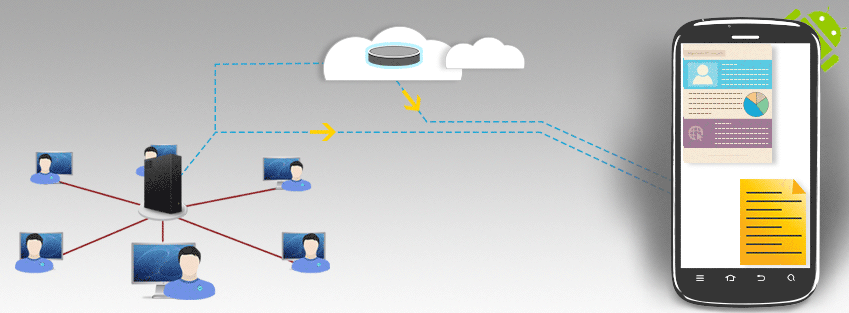Last Updated on December 26, 2024 by Satyendra

Android is the most widely used Operating Systems for smart devices like smartphones and tablets. Its popularity and usage to browse the World Wide Web had already surpassed that of Windows devices and computers. Seeking their popularity the IT professionals are already using the third party apps for connecting with their File Servers, taking remotes of their machines, and managing their servers. These apps are serving their purpose for which they’ve been created by the manufacturers and installed by the users. However when it comes to the third-party Windows Server auditor programs, there is a different story. Before talking about the feasibility of porting the third party Windows Server auditors to Android, let us have a look how these auditors actually work in their default Windows desktop environment.
How the third party auditors work?
The third party Windows Server auditor tools capture the relevant data from the large pool of raw events, convert them into the readable format, store them permanently in their database, and display the data for auditing in a presentable format.
When an auditor program is installed on a computer, it first tends to connect with the desired server like Exchange Server, File Server, Active Directory, SQL Server, SharePoint Server, etc. After establishing the connection, it monitors the server activities and captures the required events in the raw format from a very large pool of events. The collected data is then transferred to the main program, which process the data to convert it into the readable format. The converted data is stored into its database with indexes and hashes. When a user requests the auditing data to be displayed through Reports/Alerts/Charts, the software then fetches the required data from its database and displays it in the presentable format.
In a Windows environment, for which they have been crafted, these tools take very less space for their functioning. However, they need a large amount of space to store the captured data. The main part of auditing requires the long-term storage of logs. Some compliance even doesn’t permit to delete the logs after a retention period.
Can the auditors be ported to Android?
The application developers can easily port the user interface of a third party auditor tools. However, the real issue will come when the program will send the agent to collect the data, receive the data from the agents, and then store it. Even the devices are smart but they’re not competent enough to store such a large database, especially in a database server. The positive point is that the Android can efficiently connect with the local or cloud-based database server to store and fetch the data.
Therefore, the perfect solution will be a combo of a Windows-desktop based Auditor tool with its Android variant, where the latter will serve as a mobile extension to the former. The main program will actually work in its traditional ways except that it has to store the captured server records on a locally hosted or cloud-based database server.

The lightweight Android application will fetch the data from the database. Then it will display the captured data, auditing reports, real-time scenarios, etc. The users cannot only browse the hefty data in a convenient manner with better interface but they can also drill down and filter it to the minutest level to see what exactly is happening. The 3D graphs, real-time alerts in the header section of Android device, beeping and vibrating on detecting something unusual on the Windows Server will obviously enhance the user experience. In fact, the Android-based extension of a third party Windows Auditor will provide more portability to the users even when they’re traveling or staying far away from their servers in remote locations.
Conclusion
Android-based devices can be a good platform to mobilize the third party Windows auditors. Instead of porting the complete application, an interactive mobile extension of the main program will serve the purpose.

 Group Policy Examples and Settings for Effective Administration
Group Policy Examples and Settings for Effective Administration 15 Most Common Types of Cyber Attack and How to Prevent Them
15 Most Common Types of Cyber Attack and How to Prevent Them Why the AD Account Keeps Getting Locked Out Frequently and How to Resolve It
Why the AD Account Keeps Getting Locked Out Frequently and How to Resolve It
